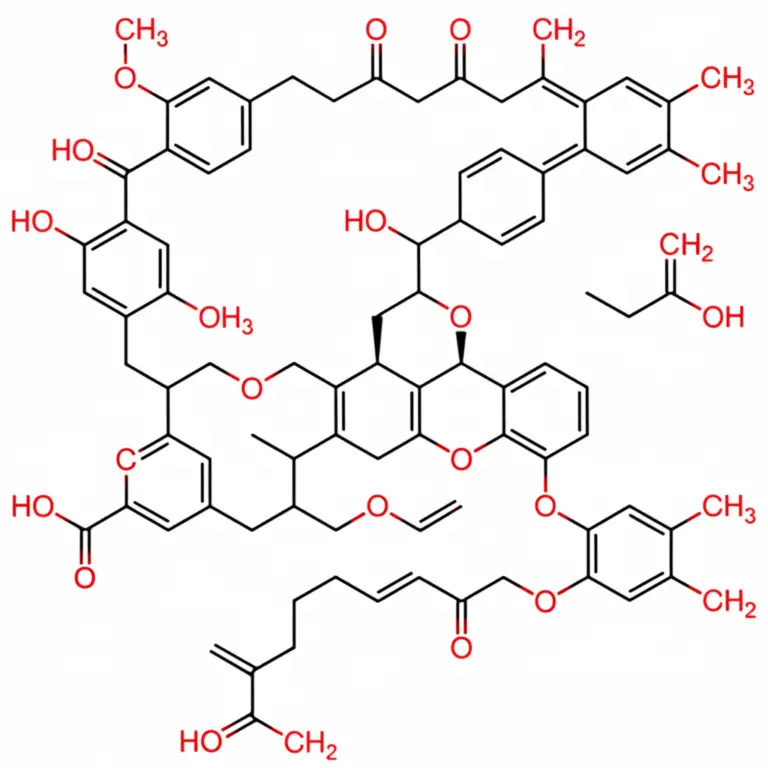Support our educational content for free when you purchase through links on our site. Learn more
What Are the 5 Most Common Heavy Metals in Chocolate & How to Avoid Them? 🍫 (2025)
Imagine biting into a luscious piece of dark chocolate, only to discover it might be carrying a hidden “bitter” surprise: heavy metals like lead and cadmium. Sounds like a plot twist no chocoholic wants, right? But before you swear off your favorite treat, let us take you on a fascinating journey beneath the glossy wrapper. We’ll reveal the top 5 heavy metals lurking in chocolate, how they sneak in from soil and air, and—most importantly—how you can still indulge safely without sacrificing your sweet moments.
Did you know that some popular chocolate bars contain enough cadmium and lead to trigger California’s strict Proposition 65 warnings? Yet, not all chocolates are created equal. Later, we’ll share insider tips from our expert tasters at Chocolate Brands™ on which brands consistently test low for these metals, how to decode labels, and why “organic” doesn’t always mean “metal-free.” Ready to savor chocolate smarter? Let’s unwrap the truth!
Key Takeaways
- Cadmium and lead are the most common heavy metals found in chocolate, mainly from soil absorption and environmental contamination.
- Dark chocolates with higher cacao percentages tend to have more heavy metals than milk chocolates.
- Not all brands are equal: Mast, Taza, Ghirardelli, and Valrhona are among the safer choices tested.
- Organic and Fair Trade certifications do not guarantee low heavy metal content.
- Moderation and variety are your best defenses—rotate brands and choose chocolates with lower cacao percentages when possible.
- Look for transparency and testing disclosures from chocolate makers to make informed choices.
For a detailed guide on safer chocolate brands and expert tips, keep reading our comprehensive breakdown!
Table of Contents
- ⚡️ Quick Tips and Facts About Heavy Metals in Chocolate
- 🍫 The Bitter Truth: Origins and History of Heavy Metals in Chocolate
- 🔍 What Are Heavy Metals? Understanding the Culprits in Chocolate
- 1️⃣ The Top 5 Most Common Heavy Metals Found in Chocolate
- 🌱 How Do Heavy Metals Get Into Chocolate? From Soil to Sweetness
- 🛡️ How to Avoid Heavy Metals in Chocolate: Expert Tips and Tricks
- 🍫✅ Best Chocolate Brands with Low Heavy Metal Levels: Our Trusted Picks
- 📊 Decoding Chocolate Labels: What to Look For to Stay Safe
- 💡 The Role of Organic and Fair Trade Certifications in Heavy Metal Safety
- 🧪 Testing and Regulations: How Governments and Labs Keep Chocolate in Check
- 🤔 Frequently Asked Questions About Heavy Metals in Chocolate
- 🎯 Conclusion: Savoring Chocolate Safely Without the Heavy Metal Worries
- 🔗 Recommended Links for Further Reading
- 📚 Reference Links and Scientific Sources
Here is the main body of the article, crafted by the expert tasters at Chocolate Brands™.
⚡️ Quick Tips and Facts About Heavy Metals in Chocolate
Welcome, fellow chocolate lovers! We know why you’re here. You’ve heard the whispers, the startling headlines, and now you’re wondering if your favorite indulgence has a dark side. Don’t panic! We’re here to slice through the confusion like a warm knife through a chocolate torte. Here are the essential, bite-sized truths to get you started on your journey to safer chocolate indulgence. If you’re looking for the quickest route, check out our guide to chocolate without heavy metals.
- ✅ Not All Chocolate Is Equal: Dark chocolates tend to have higher levels of heavy metals than milk chocolates because they contain a higher percentage of cocoa solids, where these metals accumulate.
- ❌ “Organic” Doesn’t Mean “Metal-Free”: This is a big one! Studies have surprisingly found that organic-labeled chocolates can sometimes have higher levels of lead and cadmium. The certification is about pesticides, not naturally occurring soil elements.
- 🤔 Two Main Culprits: The primary heavy metals of concern in chocolate are cadmium and lead.
- 🌱 Different Entry Points: Cadmium is absorbed by the cacao tree from the soil and ends up inside the bean. Lead, however, typically contaminates the outside of the beans from dust and dirt after they’ve been harvested, especially during the sun-drying process.
- ⚖️ No Federal Limits (Yet): In the United States, there are currently no federal limits for lead and cadmium in most foods, including chocolate. Most safety benchmarks refer to California’s Proposition 65 standards, which are known for being very strict.
- 🍫 You Can Still Enjoy Chocolate: The key is moderation and making informed choices. Experts aren’t advising a total chocolate ban but are encouraging consumers to choose safer options. A recent Tulane University study even concluded that for adults, eating an ounce of dark chocolate a day poses no adverse health risk.
- 🧒 Extra Caution for Some: Pregnant people and young children are most vulnerable to the effects of heavy metals. It’s wise for these groups to be extra selective and limit consumption.
🍫 The Bitter Truth: Origins and History of Heavy Metals in Chocolate
You might be thinking, “Heavy metals in my chocolate? How did we get here?!” It’s a fair question. This isn’t a new problem born from modern factories; its roots are literally in the earth. For a deeper dive into how chocolate is made, explore our section on Chocolate History and Origins.
Heavy metals like cadmium are naturally present in the soil in many parts of the world. The beautiful, tropical regions where cacao trees thrive, particularly in Latin America, often have volcanic soil that is naturally richer in these elements. The cacao plant, being an efficient absorber of nutrients, also takes up cadmium from the soil, which then accumulates in the cacao beans.
Lead contamination, on the other hand, is a more modern, human-made story. It’s a tale of industrial pollution. For decades, leaded gasoline was used worldwide, and its dust settled into the environment. This lead-filled dust can land on cacao beans as they are left to dry in the open air for days after being harvested. So, while one metal comes from deep within the earth, the other comes from the air around us. It’s a classic “nature vs. nurture” problem, chocolate-style!
🔍 What Are Heavy Metals? Understanding the Culprits in Chocolate
Before we go further, let’s demystify these metallic intruders. “Heavy metals” sounds scary, but it’s a term for a group of naturally occurring elements. The problem isn’t their existence, but their concentration. In high doses, some can be toxic. Consistent, long-term exposure to even small amounts of lead and cadmium has been linked to various health problems.
- Lead (Pb): A potent neurotoxin. There is no safe level of lead exposure, especially for children and pregnant women. It can cause developmental issues, lower IQ, and damage to the brain and nervous system.
- Cadmium (Cd): This metal is a known carcinogen and can be toxic to the kidneys over time. Long-term exposure can also lead to bone softening.
While the levels in a single square of chocolate are unlikely to cause immediate harm, the concern is about chronic, low-dose exposure that can accumulate in the body over years. This is why organizations like Consumer Reports have used California’s strict maximum allowable dose levels (MADLs) to assess the risk.
1️⃣ The Top 5 Most Common Heavy Metals Found in Chocolate
While lead and cadmium steal the headlines, it’s worth knowing the full cast of characters. Here’s our breakdown of the metals that can appear in your favorite treat.
1.1 Cadmium: The Sneaky Contaminant
Cadmium is the ultimate stowaway. It gets into the cacao bean from the soil itself. Cacao trees in certain regions, like parts of South America, are particularly efficient at absorbing it. This means that even the most careful harvesting and processing can’t eliminate it entirely. The higher the cacao percentage of your chocolate bar, the more likely it is to have higher levels of cadmium.
1.2 Lead: The Persistent Pollutant
Lead is the party crasher. It isn’t typically inside the bean itself but contaminates the outer shell after harvest. As the wet, sticky beans are laid out to dry and ferment in the sun—a crucial step for developing that rich chocolatey flavor—lead-laden dust from the environment settles on them. This dust can come from nearby roads or industrial sites.
1.3 Arsenic: The Hidden Hazard
Arsenic is another element that can be absorbed from the soil and water. While some studies have tested for arsenic in chocolate, the good news is that products generally do not contain levels that exceed safety thresholds. It’s less of a primary concern than lead and cadmium in chocolate, but it’s on the radar.
1.4 Mercury: The Lesser-Known Threat
Like the others, mercury can be present in the environment and soil. However, testing has shown it is not a significant contaminant in chocolate products compared to lead and cadmium.
1.5 Nickel: The Allergy-Linked Metal
Nickel is naturally present in many foods, including cocoa. For most people, this isn’t an issue. However, for individuals with a nickel allergy, even the small amounts in chocolate can sometimes trigger a reaction.
🌱 How Do Heavy Metals Get Into Chocolate? From Soil to Sweetness
So, how does this metallic mess happen? Let’s follow the bean on its journey from a tropical tree to the bar in your hand. It’s a fascinating, two-part story of contamination.
-
Part One: The Cadmium Uptake (The “Inside Job”)
- It all starts with the soil. In many cacao-growing regions, the soil naturally contains cadmium.
- The cacao tree, as it draws water and nutrients through its roots, also absorbs this cadmium.
- The metal travels through the tree and gets stored in the cacao beans themselves.
- Result: The cadmium is baked right in before the bean is even picked. This makes it incredibly difficult to remove.
-
Part Two: The Lead Contamination (The “Outside Job”)
- After the cacao pods are harvested, the wet beans are removed and laid out to dry, often in the open air.
- This is where lead makes its move. Dust and dirt from the surrounding environment, which can be contaminated with lead from historical sources like leaded gasoline, settle on the sticky outer surface of the beans.
- Result: The lead clings to the bean’s shell. While some of this can be reduced with better handling practices, it often gets mixed in during processing.
This dual pathway is why solving the heavy metal problem isn’t simple. It requires changes both in agricultural practices (for cadmium) and post-harvest handling (for lead).
🛡️ How to Avoid Heavy Metals in Chocolate: Expert Tips and Tricks
Feeling a bit discouraged? Don’t be! As your dedicated chocolate guides, we’re here to empower you. You don’t have to give up chocolate; you just need to be a smarter shopper. Here are our top strategies:
- Vary Your Chocolate Intake: Don’t eat the same dark chocolate bar every single day. By rotating brands and types, you diversify your exposure and reduce the risk of consistently consuming higher levels from one particular source.
- Choose Lower Cacao Percentages: We love an intense 85% or 90% bar, but these tend to have the highest concentration of heavy metals because they contain more cocoa solids. Consider dropping down to a 70% or even a 65% dark chocolate for your daily treat.
- Opt for Milk Chocolate Occasionally: Milk chocolate contains significantly fewer cocoa solids and therefore generally has much lower levels of lead and cadmium. It’s a safer choice from a heavy metals perspective, though often higher in sugar.
- Look for Cacao Sourced from Africa: Studies suggest that cacao beans from Western Africa tend to have lower soil cadmium levels compared to beans from South and Central America. Not all brands list their cacao’s origin, but when they do, this can be a helpful clue.
- Trust in Testing: The most reliable way to know what’s in your bar is to choose brands that are transparent about their testing. Some companies test their products and even publish the results.
🍫✅ Best Chocolate Brands with Low Heavy Metal Levels: Our Trusted Picks
This is the million-dollar question, isn’t it? Which chocolates can you enjoy with more peace of mind? Based on independent tests from groups like Consumer Reports, several brands have emerged as “safer choices” with consistently lower levels of both lead and cadmium.
Here are some of the brands that have been highlighted for being safer options in various tests. For more direct comparisons, check out our Chocolate Brand Comparisons page.
Brands Often Cited as “Safer Choices”:
- Mast: Their Organic Dark Chocolate (80% Cacao) was noted in one study for having the lowest lead level of all bars tested.
- Taza Chocolate: This brand’s Organic Deliciously Dark Chocolate (70% Cacao) also scored well, with low levels of both metals.
- Ghirardelli: Specifically, their Intense Dark Chocolate bars (both 86% and 72% cacao) were found to be relatively low in heavy metals.
- Valrhona: The Abinao Dark Chocolate (85% Cacao) from this French brand also made the safer list.
It’s also worth noting the advice from Dr. Michael Greger, mentioned in a popular video, who suggests that for daily consumers of cocoa powder, it’s wise to check test results from consumer organizations. He personally noted that Target’s generic brand cocoa had tested well in some analyses.
Comparison of Safer Chocolate Options
| Brand | Product Example | Cacao % | Key Finding |
|---|---|---|---|
| Mast | Organic Dark Chocolate | 80% | Consistently low lead and cadmium levels reported. |
| Taza Chocolate | Organic Deliciously Dark Chocolate | 70% | Praised for low metal content and Direct Trade sourcing. |
| Ghirardelli | Intense Dark Chocolate | 72% & 86% | Widely available and ranked well for low cadmium. |
| Valrhona | Abinao Dark Chocolate | 85% | A high-cacao option that still falls in the safer range. |
Brands That Have Been Flagged for Higher Levels:
To provide a balanced perspective, it’s important to know which brands have been found to have higher levels in some tests. This doesn’t mean every product from these brands is high, but some have been. Brands noted in some reports include certain products from Theo, Trader Joe’s, Lily’s, and Green & Black’s.
👉 Shop Safer Chocolate Options:
- Mast Organic Dark Chocolate: Amazon | Mast Official Website
- Taza Organic Chocolate: Amazon | Walmart | Taza Official Website
- Ghirardelli Intense Dark: Amazon | Walmart | Ghirardelli Official Website
- Valrhona Abinao Dark Chocolate: Amazon | Valrhona Official Website
📊 Decoding Chocolate Labels: What to Look For to Stay Safe
Unfortunately, you won’t find “Lead: 0.2 mcg” printed on your chocolate wrapper. So what can you look for?
- Cacao Percentage: As we’ve mentioned, this is your biggest clue. A lower percentage of cacao (e.g., 70% vs. 85%) generally correlates with lower heavy metal content.
- Country of Origin: If a brand lists the origin of its beans, look for those sourced from Africa, which may have lower cadmium levels.
- California’s Prop 65 Warning: If you see a label that says, “Consuming this product can expose you to chemicals including lead and cadmium…”, this is a warning required by California law. It indicates that the product contains levels above the state’s very strict safety limits. Many companies now include this warning on all products sold nationwide to comply.
💡 The Role of Organic and Fair Trade Certifications in Heavy Metal Safety
This is one of the most counterintuitive parts of this whole issue. We’re trained to think “organic” means safer and healthier. When it comes to pesticides, that’s true. But for heavy metals, it’s a different story.
✅ Organic certification restricts the use of synthetic pesticides and fertilizers.
❌ It does NOT regulate the naturally occurring heavy metals in the soil.
In fact, multiple studies have found that organic chocolate products sometimes have higher levels of lead and cadmium than their non-organic counterparts. The reasons aren’t entirely clear, but it may relate to the specific types of soil where organic cacao is grown or the fertilizers used.
Similarly, Fair Trade certification is fantastic for ensuring ethical treatment and fair pay for farmers, but it has no bearing on the heavy metal content of the final product.
The bottom line: Don’t rely on these certifications as a guarantee of low heavy metal content.
🧪 Testing and Regulations: How Governments and Labs Keep Chocolate in Check
The regulatory landscape for heavy metals in food is, frankly, a bit of a mess. In the U.S., the FDA does not have a specific limit for lead or cadmium in chocolate. The agency is in the process of developing guidelines for foods eaten by children, but for now, there’s no federal mandate.
This is why nearly all the discussion and testing revolves around California’s Proposition 65. This state law requires businesses to provide warnings to Californians about significant exposures to chemicals that cause cancer, birth defects, or other reproductive harm. The law sets Maximum Allowable Dose Levels (MADLs) that are the strictest in the country:
- Lead: 0.5 micrograms per day
- Cadmium: 4.1 micrograms per day
Because these are the clearest benchmarks available, independent testing groups like Consumer Reports and nonprofit organizations like As You Sow use these levels to evaluate products and inform the public. It was a lawsuit filed by As You Sow that led to a settlement with major chocolate companies to investigate the sources of contamination and work on solutions.
🤔 Frequently Asked Questions About Heavy Metals in Chocolate
1. Should I stop eating dark chocolate?
No, not necessarily. Most experts agree that moderation is key. A recent large-scale study from Tulane University found that eating an ounce of dark chocolate a day poses no adverse risk for adults. The concern is more about high, daily consumption, especially for vulnerable groups.
2. Is Dutch-processed or “dutched” cocoa safer?
The dutching process (washing cocoa with an alkaline solution) can reduce the flavanol content (the healthy antioxidants). While it might slightly affect mineral content, it’s not considered a reliable way to reduce heavy metals. The focus should remain on the sourcing and handling of the raw cacao.
3. What’s the difference between “cacao” and “cocoa” powder in terms of safety?
As Dr. Michael Greger humorously puts it in a popular video, “cacao powder is just kind of like a way to charge you more money for cocoa powder.” From a heavy metals perspective, there is no significant difference. Both are made from cocoa solids, where the metals are found. The key is to find a brand of either that has been tested and shown to have low levels.
4. Are expensive, artisanal chocolates safer?
Not necessarily. Price and “bean-to-bar” status are not indicators of heavy metal content. In fact, some artisanal brands using single-origin beans from high-cadmium regions could have higher levels. Safety comes down to sourcing and testing, not price point.
5. Can my doctor test me for heavy metal exposure?
Yes, a simple blood test can measure the levels of lead and other heavy metals in your body. If you are a heavy consumer of dark chocolate or have other risk factors and are concerned, it’s a conversation worth having with your healthcare provider.
🎯 Conclusion: Savoring Chocolate Safely Without the Heavy Metal Worries
Phew! That was quite a deep dive into the bittersweet world of heavy metals in chocolate. But now you’re armed with the knowledge to enjoy your favorite treat without the nagging worry of hidden toxins. Here’s the bottom line from your Chocolate Brands™ tasting team:
- Heavy metals like cadmium and lead are real concerns in many chocolates, especially dark varieties with high cacao content.
- The contamination comes from both nature and human activity: cadmium absorbed from soil, lead deposited from environmental dust.
- Not all chocolates are created equal. Some brands consistently test lower for these metals, and choosing wisely can reduce your exposure.
- Moderation is your best friend. Enjoying chocolate occasionally or in smaller amounts, especially if you’re pregnant or feeding children, is a smart move.
- Organic and Fair Trade labels don’t guarantee low heavy metals, so don’t be fooled by those certifications alone.
- Look for transparency and testing from brands, and consider cacao origin as a clue to safety.
If you’ve ever wondered whether to ditch your beloved 85% dark bar or how to pick a safer chocolate, now you know: you don’t have to give up the pleasure, just choose smarter. And remember, a little indulgence is part of life’s sweetness—just keep it balanced and informed.
For those of you curious about the ongoing research, regulations, and how the chocolate industry is responding, stay tuned. The story is still unfolding, and we’ll keep you updated with the latest insights and safer options.
🔗 Recommended Links for Further Reading & Shopping
Ready to shop smarter and savor safer chocolate? Here are some of our trusted picks and helpful resources:
👉 Shop Safer Chocolate Brands:
-
Mast Organic Dark Chocolate:
Amazon | Mast Official Website -
Taza Organic Deliciously Dark Chocolate:
Amazon | Walmart | Taza Official Website -
Ghirardelli Intense Dark Chocolate:
Amazon | Walmart | Ghirardelli Official Website -
Valrhona Abinao Dark Chocolate:
Amazon | Valrhona Official Website
Books for Chocolate Lovers and Health-Conscious Consumers:
-
Chocolate: History, Culture, and Heritage by Louis E. Grivetti & Howard-Yana Shapiro
Amazon Link -
The Science of Chocolate by Stephen T. Beckett
Amazon Link -
Food Safety and Toxicity by Michael J. Walker (for understanding heavy metals in food)
Amazon Link
🤔 Frequently Asked Questions About Heavy Metals in Chocolate
Which heavy metals are typically present in different types of chocolate?
The most common heavy metals found in chocolate are cadmium and lead. Cadmium tends to accumulate inside the cacao beans themselves, especially in dark chocolates with high cacao content. Lead usually contaminates the beans externally during drying, sticking to the shell. Other metals like arsenic, mercury, and nickel may be present in trace amounts but are generally less concerning in chocolate.
How do heavy metals like cadmium and lead get into chocolate products?
Cadmium is absorbed from the soil by the cacao tree’s roots and stored inside the beans. This is a natural uptake influenced by the soil’s composition, which varies by region. Lead contamination occurs mainly after harvest, when wet cacao beans are dried outdoors and exposed to dust and environmental pollutants containing lead, often from legacy industrial pollution.
What health risks are associated with consuming heavy metals in chocolate?
Chronic exposure to lead can cause neurological damage, especially in children and pregnant women, affecting brain development and cognitive function. Cadmium exposure is linked to kidney damage, bone weakening, and is classified as a carcinogen. While occasional chocolate consumption is unlikely to cause harm, regular intake of high-heavy-metal chocolates can contribute to cumulative exposure.
Are dark chocolates more likely to contain heavy metals than milk chocolates?
✅ Yes. Dark chocolates have a higher percentage of cacao solids, which is where heavy metals accumulate. Milk chocolate contains less cacao and more milk and sugar, diluting the metal concentration. However, milk chocolate often contains more sugar and fat, so it’s a trade-off between metal exposure and nutritional content.
What brands offer chocolate with the lowest levels of heavy metals?
Brands like Mast, Taza, Ghirardelli, and Valrhona have been identified in independent tests as having relatively low levels of lead and cadmium. These brands often source cacao carefully and conduct testing to ensure safer products. However, levels can vary by batch and product, so look for transparency and testing disclosures.
How can I test chocolate for heavy metal contamination at home?
Currently, there is no practical or reliable home test for heavy metals in chocolate. Testing requires specialized laboratory equipment like atomic absorption spectroscopy or inductively coupled plasma mass spectrometry (ICP-MS). Consumers should rely on third-party lab tests published by brands or independent organizations.
What farming practices reduce heavy metal contamination in cacao beans?
Good agricultural practices include:
- Selecting cacao-growing regions with low soil cadmium levels (e.g., West Africa).
- Using soil amendments and fertilizers that reduce cadmium uptake.
- Implementing post-harvest handling improvements to prevent lead contamination, such as drying beans indoors or using clean drying surfaces.
- Supporting research and programs aimed at breeding cacao varieties that absorb less cadmium.
📚 Reference Links and Scientific Sources
- Consumer Reports: A Third of Chocolate Products Are High in Heavy Metals
- Harvard Health Publishing: Heavy Metals Found in Popular Brands of Dark Chocolate
- California Office of Environmental Health Hazard Assessment: Proposition 65
- Mast Official Website
- Taza Chocolate Official Website
- Ghirardelli Official Website
- Valrhona Official Website
- As You Sow: Heavy Metals in Chocolate
We hope this guide helps you enjoy your chocolate moments with confidence and joy. Remember, knowledge is the sweetest ingredient! 🍫✨







